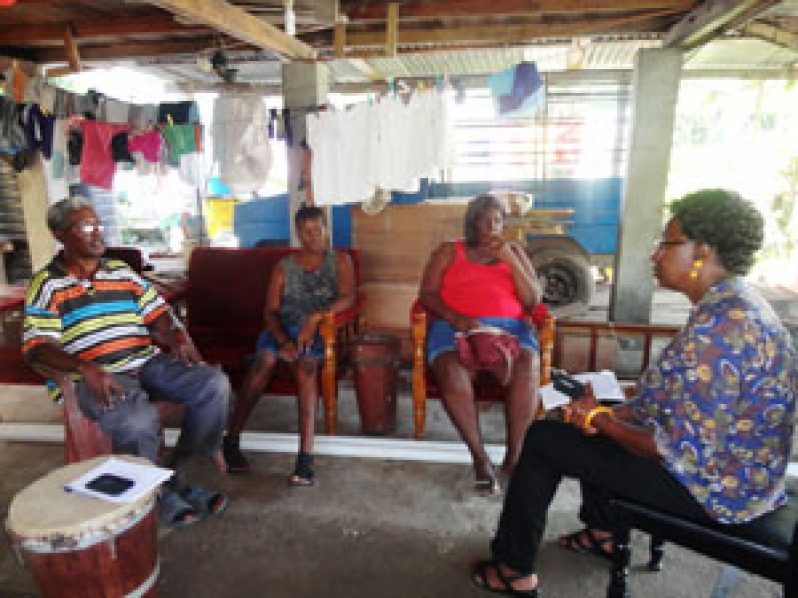WITH not even a road sign to announce its identity, Farm Village, located on the East Bank of Essequibo, is, at first glance, quiet and nondescript; but enter the village and speak to the village elders about its history, and you will see that Farm village is indeed somewhere special.
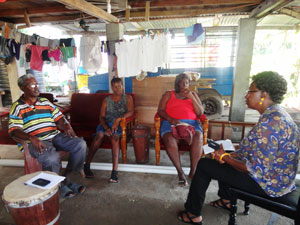 Bought by 23 freed men and women in the Village Movement which followed the end of slavery in the British Caribbean, Farm is the African Guyanese village to be honoured by the African Cultural and Development Association (ACDA) for African Emancipation this year. Some 50 families are currently residing there.
Bought by 23 freed men and women in the Village Movement which followed the end of slavery in the British Caribbean, Farm is the African Guyanese village to be honoured by the African Cultural and Development Association (ACDA) for African Emancipation this year. Some 50 families are currently residing there.
Farm village was purchased in 1887, but the deed was formalized in the Deeds Registry in 1888. Farm was the last Village purchased by freed Africans. It had previously been run by a village council, which oversaw the affairs of the village.
The distinction of being the first village Chairman is held by Sage Duncan, while the equally noteworthy distinction of 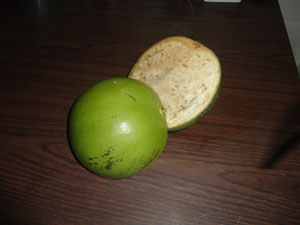 being the last is held by our host and guide, Mr Richard Waddel, known as Uncle Joe. The Village Council ran the affairs of the village from the time that it was purchased until it was handed over to the Regional Democratic Council in 1994.
being the last is held by our host and guide, Mr Richard Waddel, known as Uncle Joe. The Village Council ran the affairs of the village from the time that it was purchased until it was handed over to the Regional Democratic Council in 1994.
A carpenter, joiner and farmer by profession, Uncle Joe was the person to go to for the history and goings-on in the village. There was plenty of talk about the old days: Transportation was by donkey cart, light was provided by flambeaux and lanterns. Flambeau lamps using Dutch bottles and aluminum tins still exist in Farm village, and may be used in emergencies.
Early history
There was no proper drainage in the early history of the village, and when there was heavy rainfall, the banks of the  Boerasirie Creek would break away, necessitating the men of the village to get out of bed, whatever the time, to repair the break with unlikely-sounding materials, such as etay (ite) palm and sweet sage sticks, which were used to chock small cracks. In some cases, bamboo was used, and it was called “Bamboo paal-off”. One man even earned this nickname, as his solution for everything was a bamboo paal-off. It was okay to call him “Bamboo paal-off” as long as you did it with a straight face.
Boerasirie Creek would break away, necessitating the men of the village to get out of bed, whatever the time, to repair the break with unlikely-sounding materials, such as etay (ite) palm and sweet sage sticks, which were used to chock small cracks. In some cases, bamboo was used, and it was called “Bamboo paal-off”. One man even earned this nickname, as his solution for everything was a bamboo paal-off. It was okay to call him “Bamboo paal-off” as long as you did it with a straight face.
Farm village still experiences some problems with its supply of potable water, which is filled with rust particles, so many villagers prefer to store their water overhead in jumbo black plastic tanks, with some homes having as many as four or five of these tanks. But this is nothing compared to what they had to endure in the past.
The formerly enslaved Africans had to depend on a spring which gave clear water day and night, their having to make a daily journey for more than a mile down into the backdam, then another hundred rods to fetch water. Any white clothing used for church and special occasions was also taken to be washed on site.
Unfortunately, this wonderful spring was filled up, and the site is inaccessible today; so a big part of history is lost. The village has a nursery school, but has yet to get a primary or secondary school; so the children of Farm village attend school in neighbouring villages. As we walked through the village, we meet 63 village children attending a vacation Bible school (VBS) hosted by the Grace Pentecostal Church.
Farm Presbyterian Church, though overgrown with vines, is an interesting site to visit. Its former magnificence cannot be 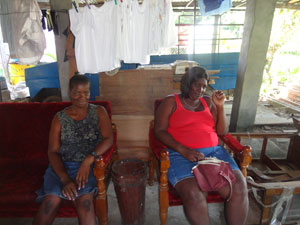 hidden. Still in use is “The Way” Wesleyan Church, the large colourful sign of which initially let us know that we were in the right village. This church has an interesting history: The pastor’s wife, who was of European origin, encased a sheet of the Sunday Argosy newspaper in a bottle in the cornerstone. Two senior members — James Fowler and Roland Cameron — believed it was a transport, and consequently engaged in a bitter battle for the document. Imagine their expressions when they discovered it was just a piece of newspaper.
hidden. Still in use is “The Way” Wesleyan Church, the large colourful sign of which initially let us know that we were in the right village. This church has an interesting history: The pastor’s wife, who was of European origin, encased a sheet of the Sunday Argosy newspaper in a bottle in the cornerstone. Two senior members — James Fowler and Roland Cameron — believed it was a transport, and consequently engaged in a bitter battle for the document. Imagine their expressions when they discovered it was just a piece of newspaper.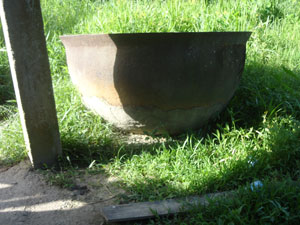
Occupation
Today, the economic mainstay of the village is farming, as in keeping with its name. Uncle Joe himself owns thirty goats, while his neighbour owns forty.
Many persons also raise cattle. Fruits make significant sales; and as you walk into Farm, you can see a wide variety of fruit trees, including mango, star apple, tamarind, jamoon and awarra. On a walkthrough of the village, Uncle Joe pointed out a now partially blocked canal that could once have accommodated a 16- foot by 40-foot punt loaded with produce.
The large calabashes on the tree in Uncle Joe’s yard attracted our attention. With the scientific name, Lagenaria 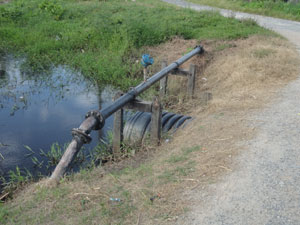 siceraria, the calabash can be dried and used as a bottle or dish. For this reason, the calabash is widely known as the bottle gourd.
siceraria, the calabash can be dried and used as a bottle or dish. For this reason, the calabash is widely known as the bottle gourd.
The calabash plays a significant part in African culture, as some calabash gourds are used to create musical instruments such as the kora and balafon. They are also used to make women’s rattles in Sierra Leone. Some very large calabash gourds are used as percussion instruments.
In Guyana, the dense white flesh of the fruit continues to be used externally as a cure for mange in dogs, and internally by humans as a remedy for the common cold, as Theresa Berne, a farm resident and mother of seven, told me. It’s a cure that her mother used, and she continues to use. The fresh calabash has a light green, smooth skin, and a dense white flesh. It must be cut with a hacksaw, Uncle Joe explained.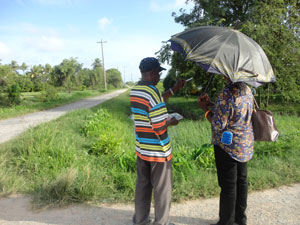
The proud, entrepreneurial, self-help spirit of Farm’s African ancestors is very much alive in the village today, evidenced by the proliferation of “bottom house” shops in the village.
Honoured
Villagers are very proud that Farm has been selected by ACDA to be the featured village, and it is a once-in-a-lifetime honour for a resident such as Uncle Joe, who, noting that the honour coincides with the 250th Anniversary of the 1763 Berbice Slave Rebellion, commented that the honour being bestowed on Farm may not be repeated for another 50 years.
The villagers plan to celebrate, as they always do, with lots of drumming, food, and socialising at the community centre. This year, the gathering will be on August 11, 2013, and everyone is welcome, even if they’re not from Farm.




.png)


